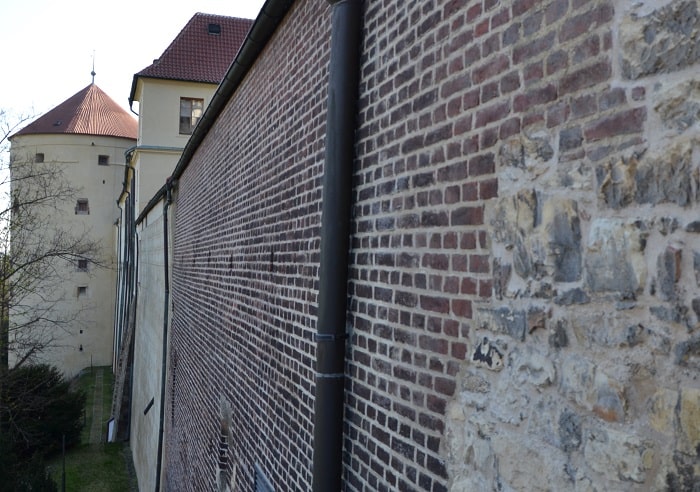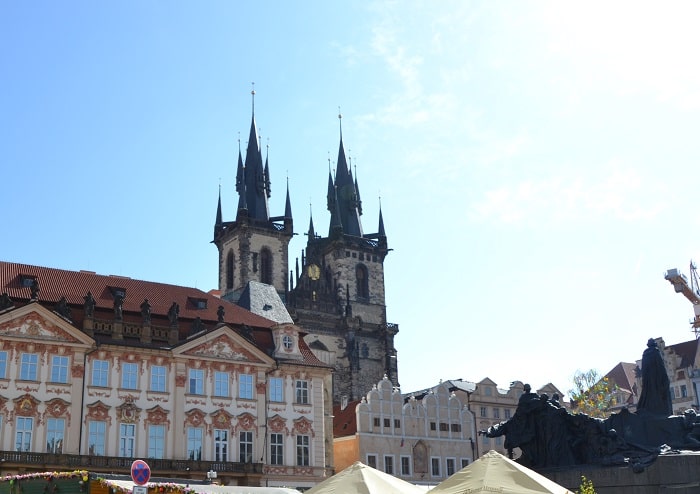Charles Bridge
Charles Bridge is not only a symbol of Prague, but also a gift of the Gothic architectural era, a memory of the craftsmanship of medieval builders.

Prehistory
The first bridge appeared in Prague around 938. It was wooden and not very reliable. Around 1158-1172, by order of King Vladislav I, the first stone bridge was built, named after Queen Judith. Such buildings demonstrated the wealth and importance of the city, symbolized the economic stability of the state. At the same time, they served as a means of replenishing the treasury, since those who used this type of crossing paid to pass. For example, every bride walking or driving from one bank to the other had to pay before entering. The same obligation was imposed on those who moved from one house to another, from one city to another. Other locals passed for free.
The first stone bridge served the citizens of Prague for about 170 years. On February 3, 1342, the snow began to melt early, the water level rose, and the stone structure could not withstand the unprecedented pressure. Chroniclers of that time describe this event as a national tragedy. From then on, for almost 15 years, each citizen independently solved the problem of crossing to the opposite bank. True, temporary wooden structures were erected, but they could not replace the stone one.
The magical date of the foundation
The grandiose project was realised by the “father of power” Charles IV. Before starting construction, the king decided to consult numerologists and astrologers about the time of laying the foundation stone. The sages recommended to start the work at a certain time – 9. 7. 1357 at 5 hours 31 minutes. If to arrange the numbers in the form of a pyramid, beginning from year of construction, then number, month and time, we will receive a peculiar pyramid (1, 3, 5, 7, 7, 9, 7, 5, 3, 1). It is composed only of odd numbers, moving in ascending order from 1 to 9 and vice versa. Odd numbers in metaphysics has always meant strong (yang) energy, so often used in the designs of temples, bridges, houses. The symbol of the number 9 is creativity, fulfilment of plans.
Astrologers have also confirmed the correctness of the choice of this date. In the horoscope, compiled at the request of the king, they drew attention to the conjunction of the Sun and Saturn. According to the ancients, this meant the conjunction of a splendid deed – the symbol of the Sun, with the principle of reliability, durability, confidence – the attributes of Saturn.

How was construction done in those days?
For those times, the project was really grandiose. The bridge was about 516 metres long, 9.5 metres wide and 13 metres above the water surface. At that time it was one of the most reliable constructions of this type in medieval Europe, as it was built of quite strong stone – sandstone. The bridge abutments were set on millstones by hammering the foundations to a depth of about 2.5 metres below the river bed. There is a classic legend about adding eggs to the mortar to make it particularly strong. According to historians, not only eggs, but also milk and cottage cheese were part of the mortar. All this was quenched with young wine. After such a thorough preparation, the mortar, hardening, became like a stone.
The construction was entrusted to the young architect Peter Parler. By a special decree of the Emperor, the inhabitants of all Czech towns were obliged to help with the construction: some villages supplied raw eggs, others milk and wine. Eggs were needed in large quantities, so wagons loaded with this fragile cargo travelled from all parts of the kingdom. However, despite the efforts of the peasants, not all the material could be transported to its destination over medieval bumpy roads. Historians say that there were piles of broken eggs on the roadsides everywhere. So the people of Velvary, wishing to please their ruler and bring everything in one piece, boiled the eggs. On the occasion of the arrival of a large consignment of material completely unsuitable for construction, the whole Prague feasted.
The construction was completed in 1402 and lasted almost 45 years. This period coincided with the heyday of the Gothic period in Bohemia, which is why the bridge is considered one of the best-preserved Gothic masterpieces in Europe.

A silent witness to the passage of time
Over the years, the Charles Bridge has witnessed many events, both happy and sad. Wars and floods have not spared it. It has also served as a place of punishment. Merchants who cheated customers in the markets were put in wooden baskets and lowered into the river on thick ropes from the bridge. They tried to keep them there longer, giving them time to think about the meaning of life.
Knights’ tournaments were organised here, festivals were held, coronation processions moved across the bridge. As the years passed, the appearance of the stone structure changed.
Few quick facts:
- 1883 – a track for horse-drawn trams first appeared on the bridge
- 1905 – the bridge welcomed first electric trams
- 1908 – first buses crossed the bridge
Public transport travelled across the bridge until the Second World War. Since 1965 it has been a pedestrian zone.
The three towers and sculptures
The stone bridge is guarded by three towers – two on the Lesser Quarter side and one on the Old Town side – the Old Town Bridge Tower. The oldest of them, on the left side, is low. It used to be part of the old Judith Bridge and has survived to this day since the 12th century. Its Gothic sister is 300 years younger and was completed during the 15 century. The most beautiful and famous of this trio is the Old Town Bridge, guarding the entrance to the Old Town, which was erected at the end of the 14th century.
From 1683 to 1938, the stone sculptures of saints (the patrons of Bohemia) gradually appeared on the bridge. Most of the sculptures are from the Baroque period and represent the works of famous Czech masters. Now the bridge is guarded by 30 open-air sculptures, most of them are copies.

Did you know that there is a wishing place on the bridge?
Everyone who has visited the Charles Bridge has stopped here to make a wish. All visitors know about this tradition. The only problem is often to find a place where wishes come true faster, since there are a few. Traditional Prague guidebooks say with absolute certainty that the sculpture of St. Jan Nepomucky helps to make wishes come true.
According to a legend, this priest, who lived in the 14th century, paid with his life for refusing to tell the secret of the queen’s confession at the request of her husband Wenceslas IV. That is why the reliefs on the pedestal of the monument can be seen from afar, inviting more and more visitors with their polished lustre.
Historians claim that the priest was a victim of palace intrigues, having opposed the king, for which he paid with his life. The place connected with his death is marked on the parapet by a cross with five stars. It is not difficult to find it now, as it has been restored with a beautiful lattice. According to Czech psychotronics experts, this is one of the most powerful energy spots on the bridge, which is why the locals have been making wishes here for a long time.


